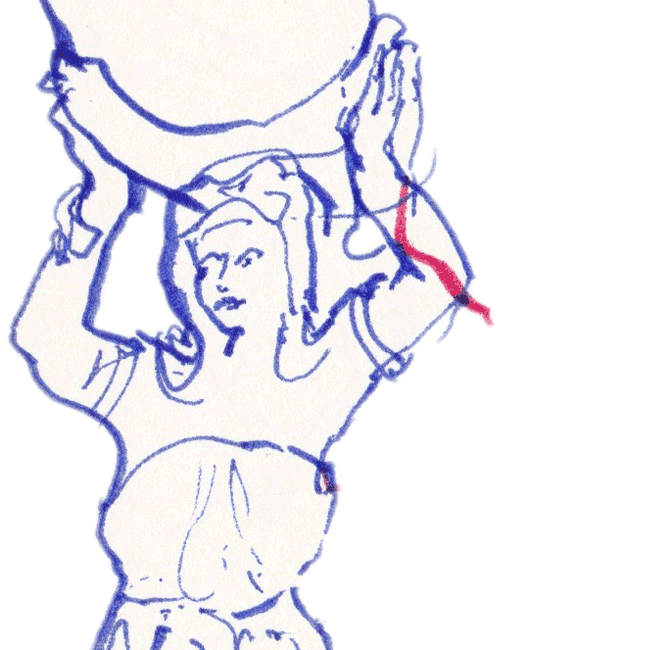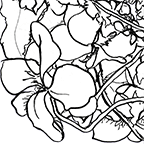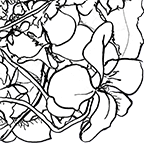




















































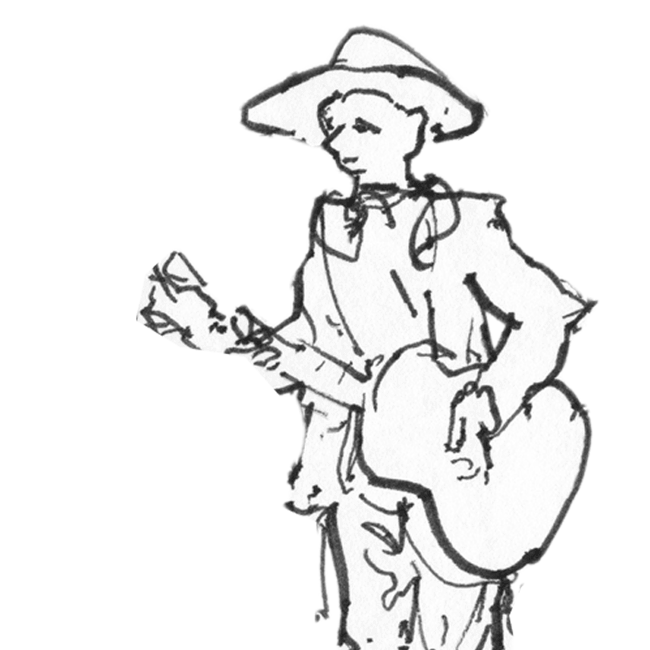
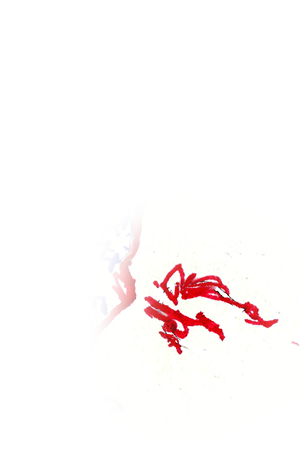
Beauty sharpens our perception of the world.
When people share Beauty, knowledge develops.
As we come to perceive the world, we begin to know ourselves.
Craft finds Beauty. Since prehistory, people make tools for perceiving nature's orders.
Beauty, using crafts, exercises our senses.
Following are topics for developing Beauty through craft.
If you can name the notes,
learn to play any musical instrument in just 30 minutes.
Music teaches us to listen.
When we understand how nature orders sound, we understand what sounds tell us. Musical instruments systematize sound. We hear each other with ideas more truthful than words.
Following are simple lessons for the fundamentals of playing music.
All the black keys of a piano form a pentatonic scale:
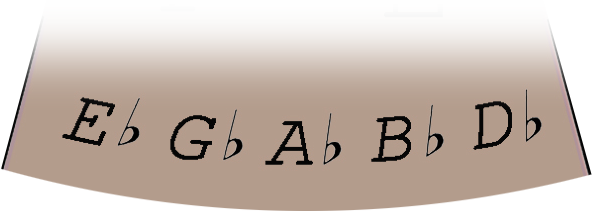
D♭, E♭, G♭, A♭, B♭; also known as
C♯, D♯, F♯, G♯, A♯.
A mixture of sharps and flats may seem more familiar:
C♯, E♭, F♯, A♭, B♭.
Play these notes, with any musical instrument.
Play them in any order, but only these five notes. Play rhythm. Play melodies.
Hear folk tunes from all cultures declare themselves and evaporate.
Notice how a tune can pleasantly end and begin on any note.

After playing 15 minutes or so, stop. Listen to the world. What do you hear? There's never absolute silence.
Notice the changes in pitch that you hear in the world.
Are birds singing; do they sing anything you were just playing?
Does someone say "Hello"? Do you recognize the rise and fall of those two syllables in your music?
These notes are of the pentatonic scale.
This scale is a natural phenomenon.
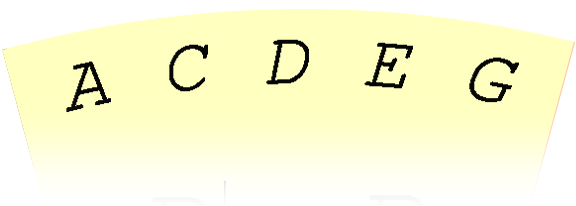

Music shifting between different pentatonic scales creates strong affects on the senses.
Play the notes C, D, E, G, A.
Experiment with these notes, just as you did in the previous example.
Invent a piece of music that shifts between passages of
C, D, E, G, A
and passages of
C♯, E♭, F♯, A♭, B♭.
It sounds unpleasant. Too many different notes, too much tension!
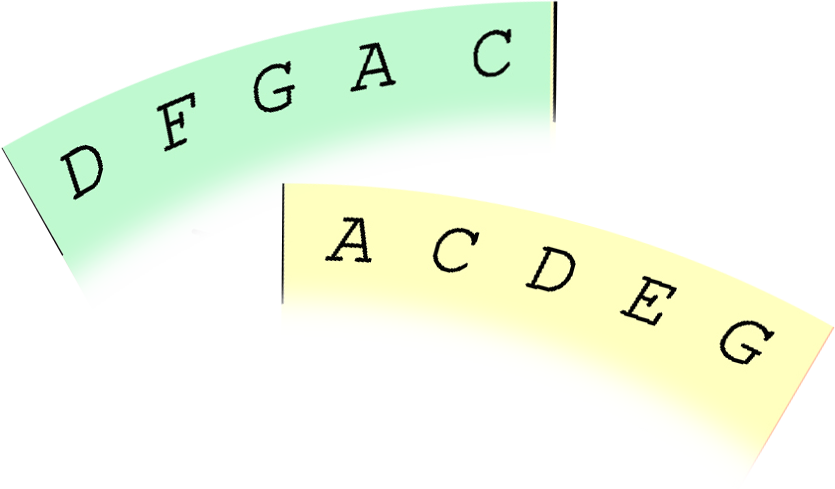
Switching between scales that share notes produces pleasant sensations. Here's a simple improvisation:
Begin on the low A, then play melodiously up to C, D, E, and G.
Drop abruptly to the lower D and climb back up F, G, A then drop again, this time to the lower C.
Experiment with other melodies and rhythms shifting between these two pentatonic scales.
A, C, D, E, G
and
D, F, G, A, C.
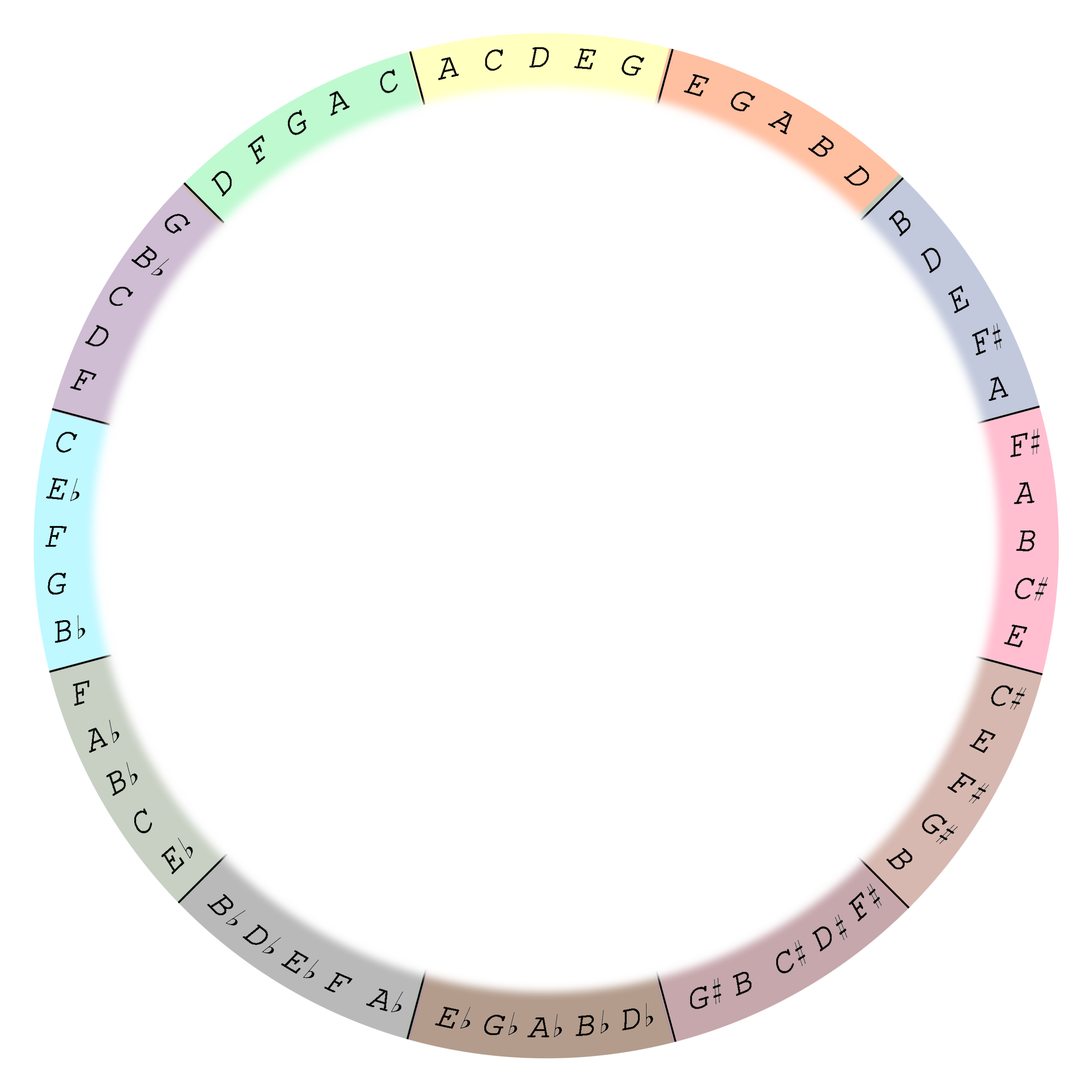
This image models the relationships between the 12 pentatonic scales. They are color-coded.
Notice the positions of the three scales you've played:
Deep Brown-
D♭, E♭, G♭, A♭, B♭
Yellow-
A, C, D, E, G
Green-
D, F, G, A, C
The two scales that combined pleasantly (green and yellow) are adjacent.
The two scales that formed an unpleasant couple (brown and yellow) are positioned at opposite sides of the circle.

We understand music in terms of key signatures. There are 12 key signatures, each with its unique pentatonic scale.
Moving between the 12 different key signatures creates sensations of measurable tension. Specific patterns produce recognizable affects.
Just as the 12 pentatonic scales form melody, they're also the basis of harmony for each key Signature.
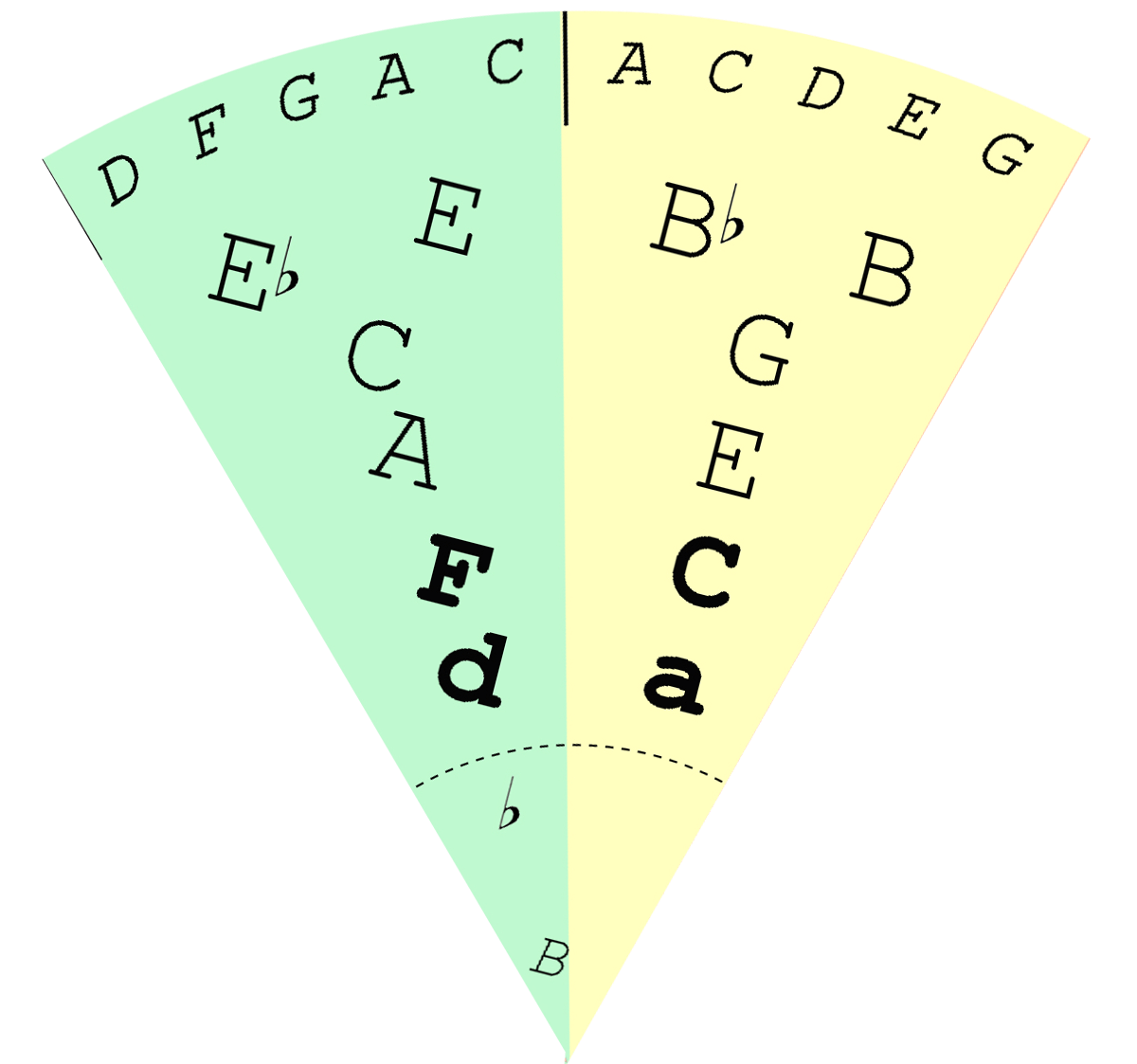
Here is an illustration of both the Natural Key Signature and the One-Flat Key Signature.
At the tip of the triangle, there is a dotted arc. In the green triangle there is one ♭, below it, there is the letter B.
This means, except for B♭, all seven notes of the key signature (two more than it's pentatonic scale) are natural.
E♭ is the exception to this rule, we'll discuss it's function soon.
The yellow triangle is the Natural Key Signature, it has no sharps or flats, except an occasional B♭.

Harmony for each key signature is based on playing three notes (a triad of notes) simultaneously. Each key signature has two basic triads, the Major and the minor.
The pentatonic scale for the Natural Key Signature includes the notes for the chords:
C Major (C, E, G)
A minor (A, C, E).
These two chords are the harmonic foundation for the Natural Key Signature.
The same types of chords are composed in the One-Flat Key Signature for F Major and D minor.

Play the Natural Key Signature's pentatonic scale over harmonies of C Major and A minor. Playing piano, you can do this alone. It's more fun to play with someone.
The pentatonic melody will always sound interesting with it's Major and minor chords.
Notice that the D of this pentatonic scale always creates tension.
When the melody plays D against the C Major or A minor; it calls out to an absent harmony.
The D wants the adjacent key Signature, in this case, the D minor chord of the One-Flat Key Signature.

You can play the pentatonic scale of Natural Key Signature over the Major and minor chords of the One-Flat Key Signature (and vice-versa).
So, if two people play together (one melody, the other harmony), but don't know exactly what each other are doing, the music will sound OK. As you're better able to listen to each other, you'll both feel your music sound better.
The minor seventh chords are also within each pentatonic scale. For our examples:
Am7 (A, C, E, G)
Dm7 (D, F, A, C).
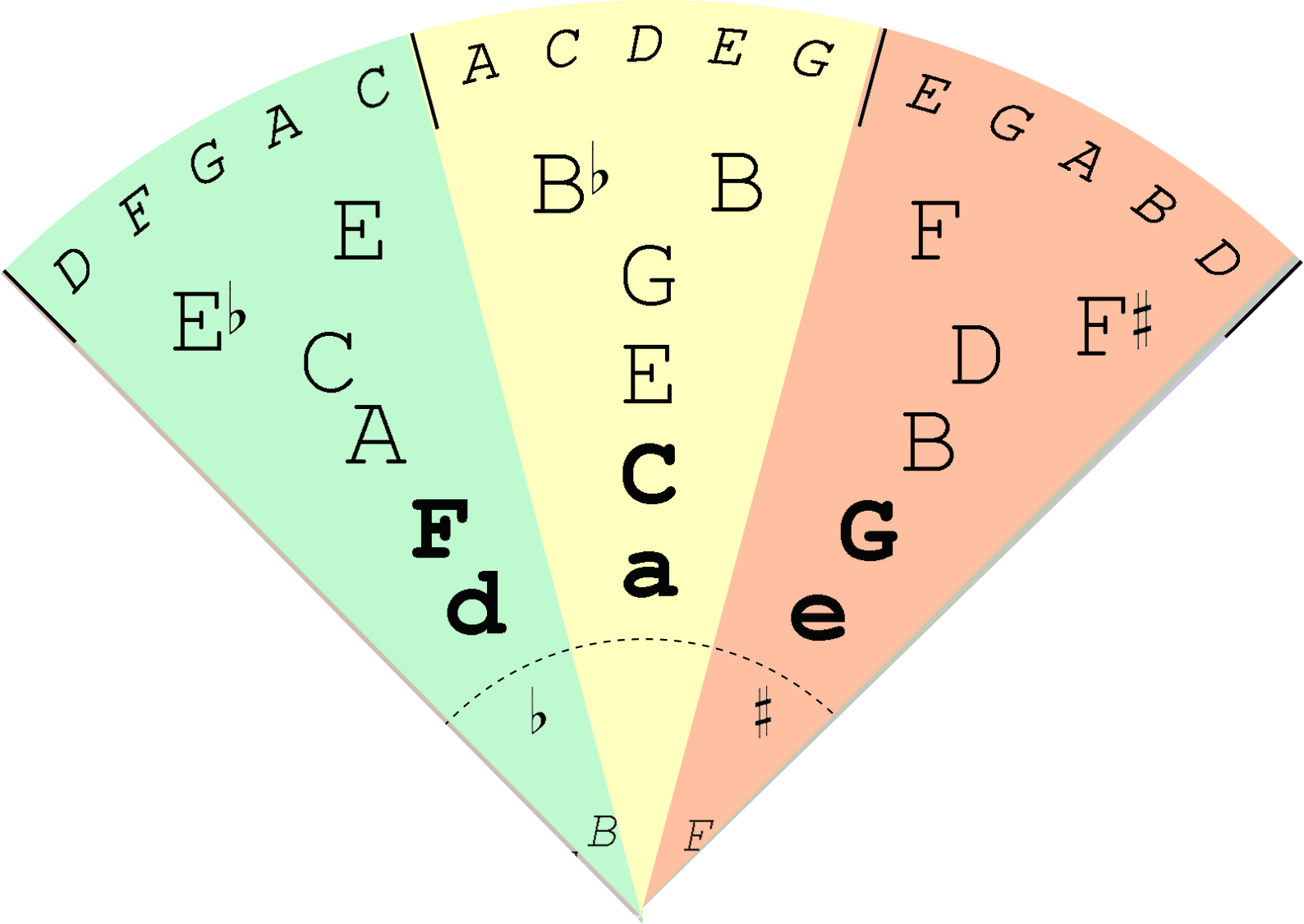
Two chords call out harmonically to the adjacent key signatures.
Add two notes outside the Natural Key Signature's pentatonic scale, B and B♭:
C Major 7th (C, E, G, B).
C dominant 7th (C, E, G, B♭).
The dominant 7th calls counter-clockwise, in this case to the One-Flat Key Signature.
The Major 7th calls clockwise, in this case to the One-Sharp Key Signature.

The D of the Natural Key Signature's Pentatonic Scale calls out to both ajacent key signatures. The D provides the tensile strength of the melodic arc.
With any three adjacent key signatures, the center holds the melody.
When the Major or minor triads of the center's key signature support the center's melody, the melody sounds resolved.
The harmony contains all the notes of the melody

If the harmony moves to the clockwise key signature (in this case, the One-Sharp Key Signature) the center's melody (in this case, the Natural Key Signature) the affective tension increases.
Some people might say the melody sounds more exciting.
Even though the melody is the same, the harmony has become measurably tenser.
The clockwise key signature's harmonies only lack one note from the melody (in this case, B).

If the harmony moves to the counter-clockwise key signature (in this case, the One-Flat Key Signature) the center's melody becomes even more affectively tense.
Some might say the melody sounds sad, reflective or some other quiet affect.
The greater tension is because the counter-clockwise key signature's harmonies lack two notes from the melody (in this case, F and C).

You've felt how playing three adjacent key signatures creates measurable affective power.
Composing chords with pentatonic scales is only the basis of music.
The 10 chords we've studied:
The Natural Key Signature:
C Major (C, E, G)
CM7 (C, E, G, B)
C7 (C, E, G, B♭)
A minor (A, C, E)
Am7 minor (A, C, E, G).
The One-Flat Key Signature:
F Major (F, A, C)
FM7 (F, A, C, E)
F7 (F, A, C, E♭)
D minor (D, F, A)
Dm7 minor (D, F, A, C).
Now, extend this same method to the One-Sharp Key Signature.

These musical patterns are known since centuries before the Key Signature concept was invented.
Musical theory and instruments are only tools for revealing natural order People feel these natural truths in advance of having the tools. The tools make perception easier.
The Afro-American Blues require only one pentatonic melody, and a minimum of one chord each from three adjacent Key Signatures.

Experiment with chords across these three Key Signatures. You've felt how music resolves when returning to the middle of the three Key Signatures (in this case, the Natural Key Signature).
But other musical situations and sensations are possible! Hundreds of combinations of these 3 scales and 15 chords exist!
The progression of harmonies and melodies across three adjacent key signatures is only one domain of music.
Humanity's music travels a labyrinth of possibilities.
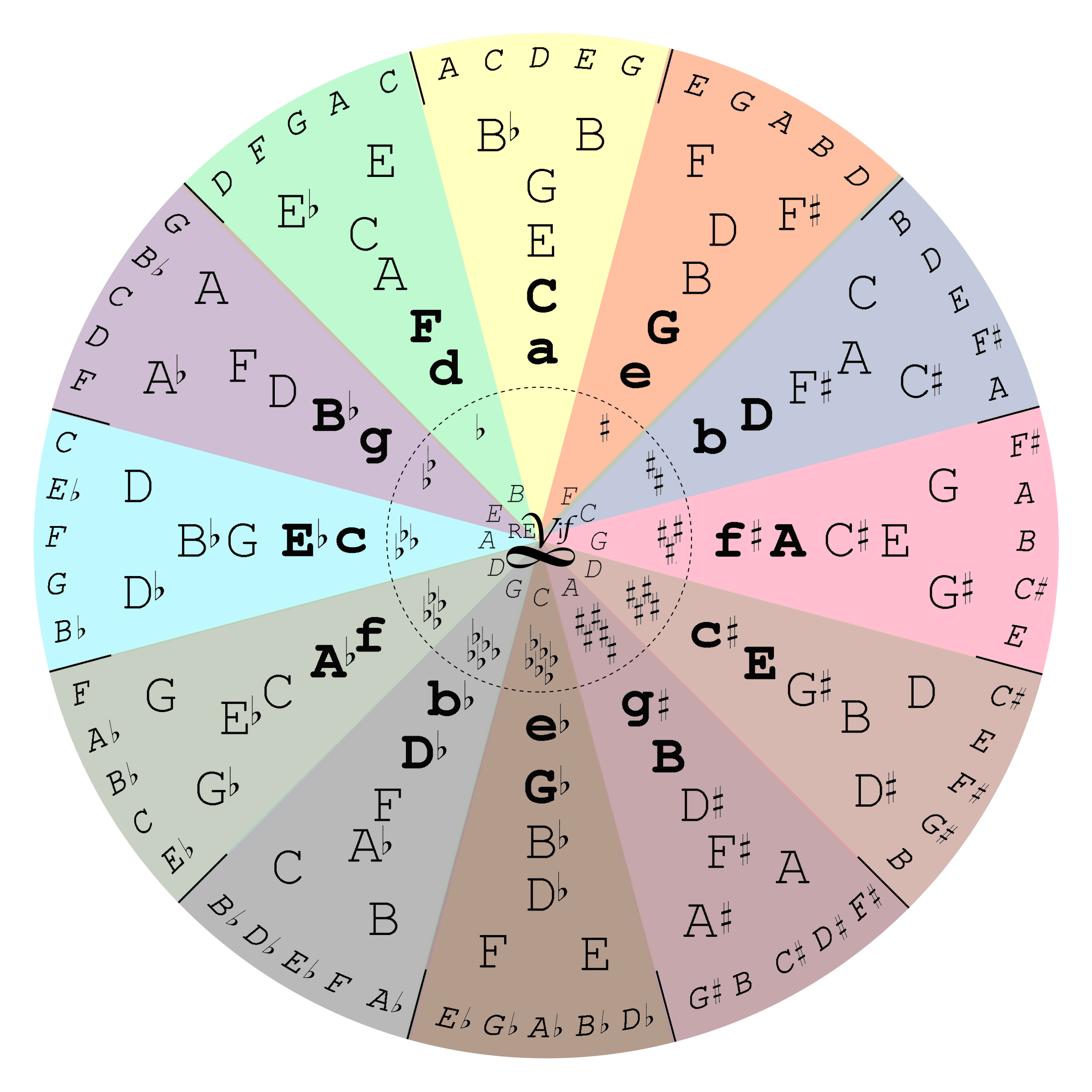
It's no coincidence that music, heard within nature, is charted upon a map divided into 12 sections.
It was the Chaldeans who, almost 3,000 years ago, charted the sky onto a 12-part circle. This same form serves us to divide our months of the year, and our hours of the day.
This musical circle is called The Cycle of Fifths. Nikolai Diletskii modeled it only since the 1670’s.
As with any instrument of natural science and art, it reveals truths beyond the vision of its inventors.

The colors ReVif has applied to the Cycle of Fifths are not decoration. These colors illustrate patterns within music and correspondences to natural orders other than music. More can be made of this subject, later.
Following is a full page Cycle of Fifths that you can copy to your clipboard. Right-click on the image and choose Copy Image from the options that appear. Then paste it into a file.
















